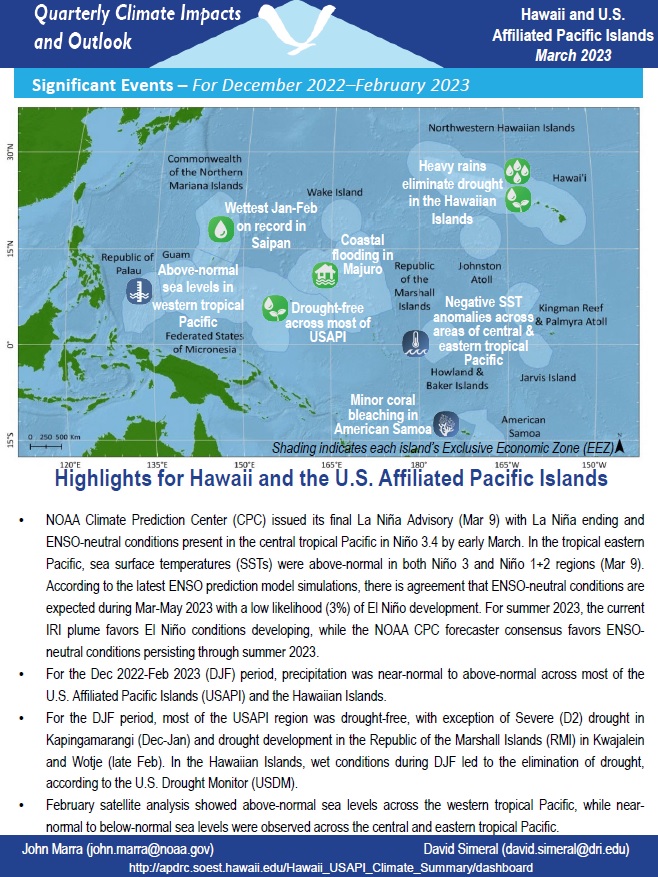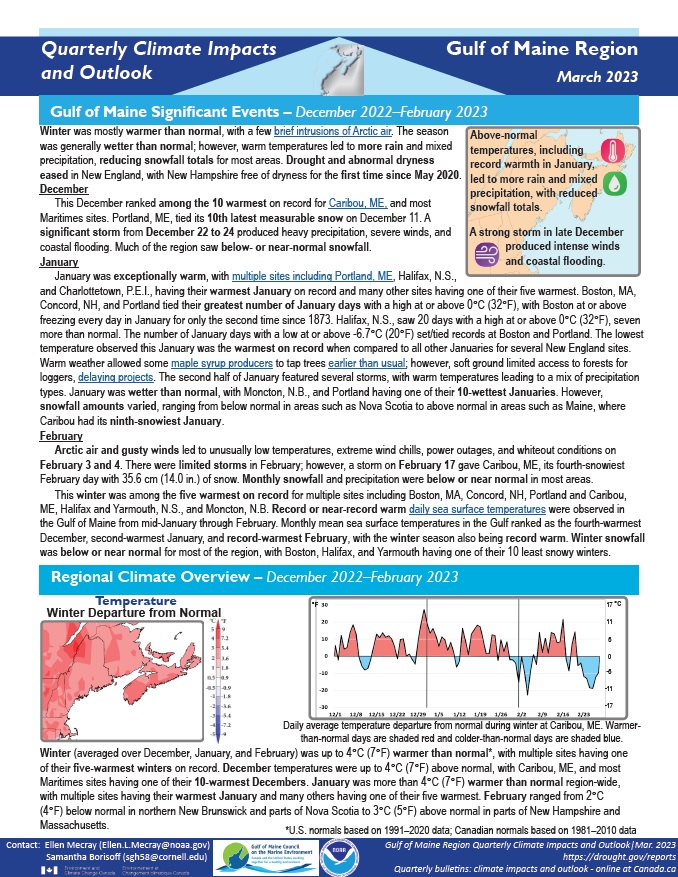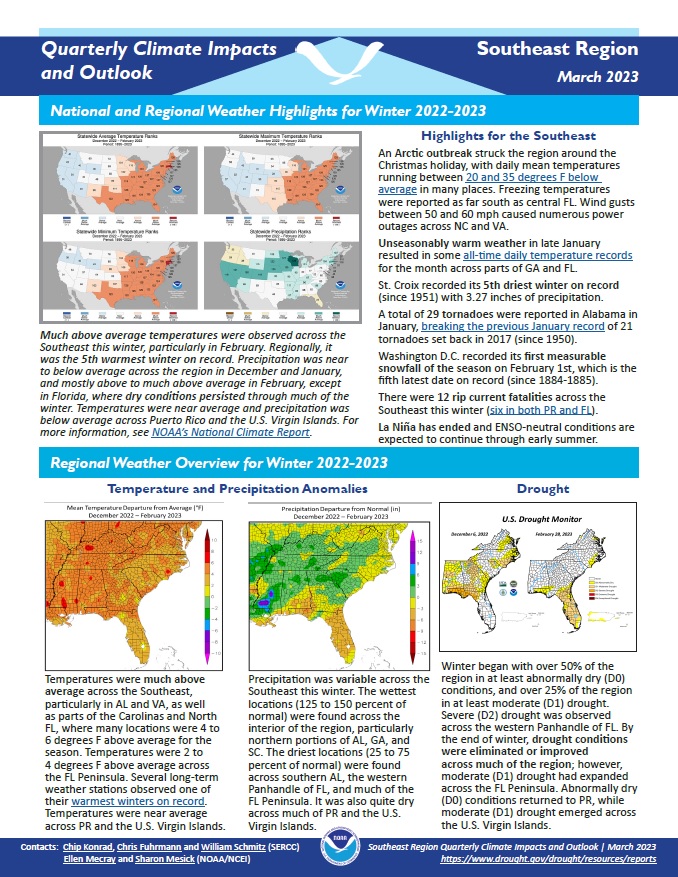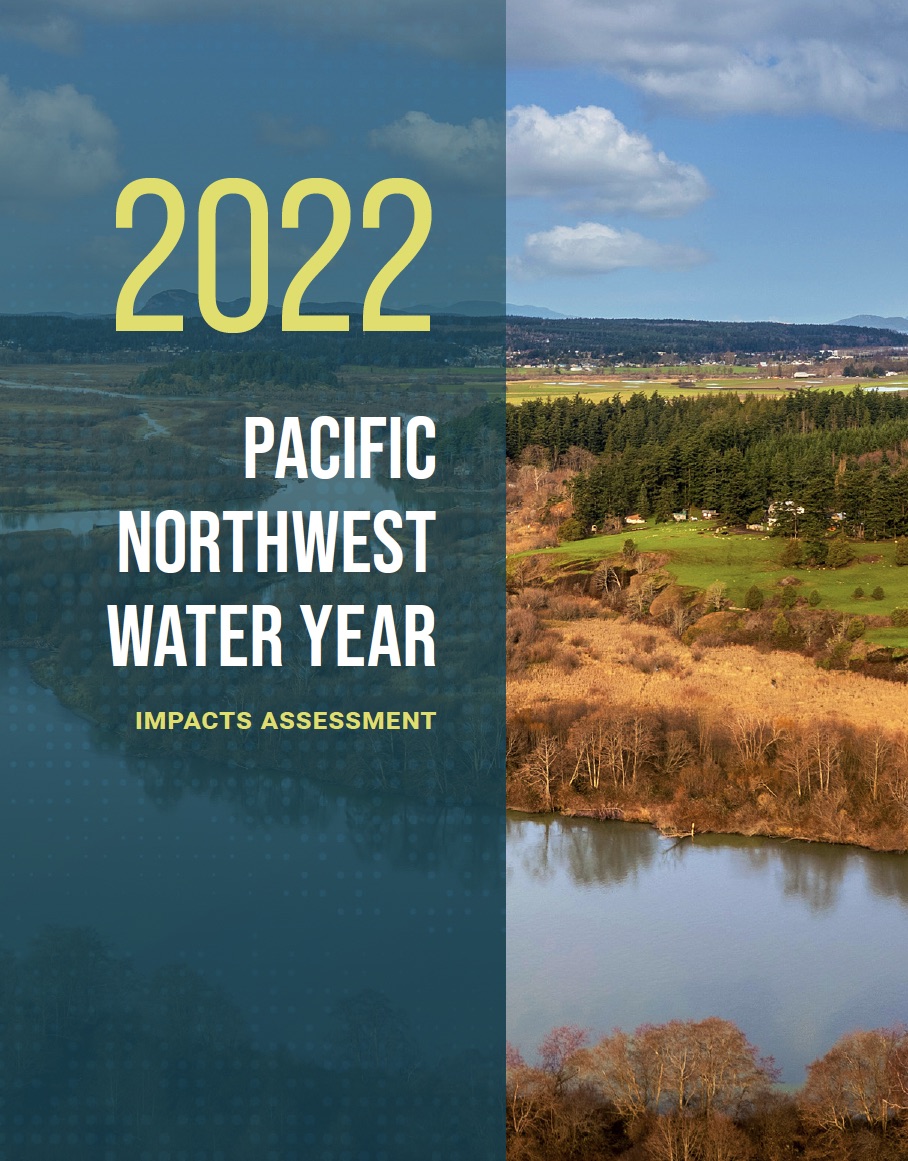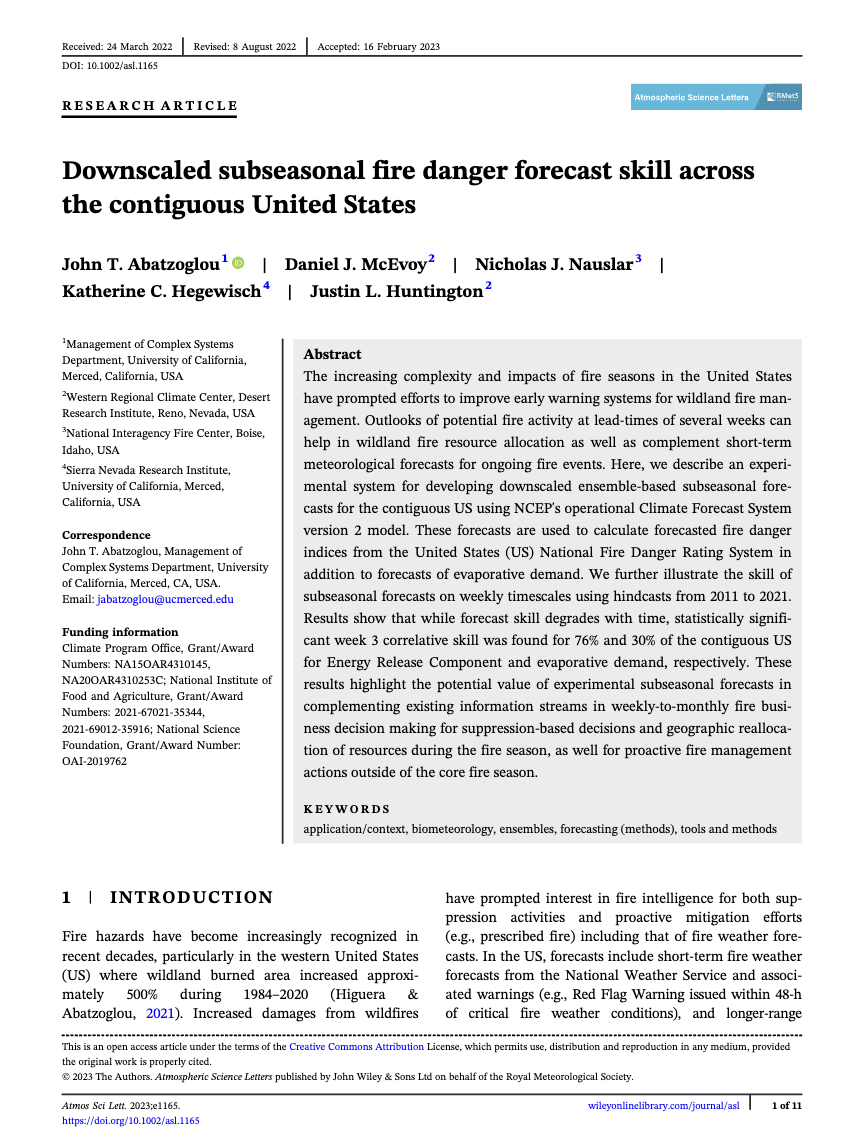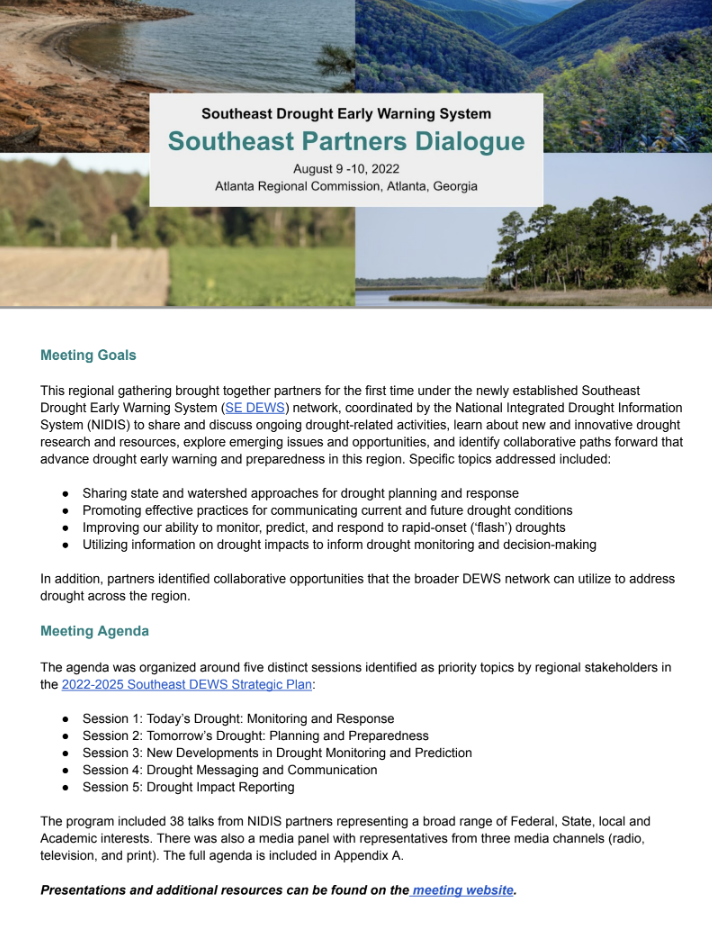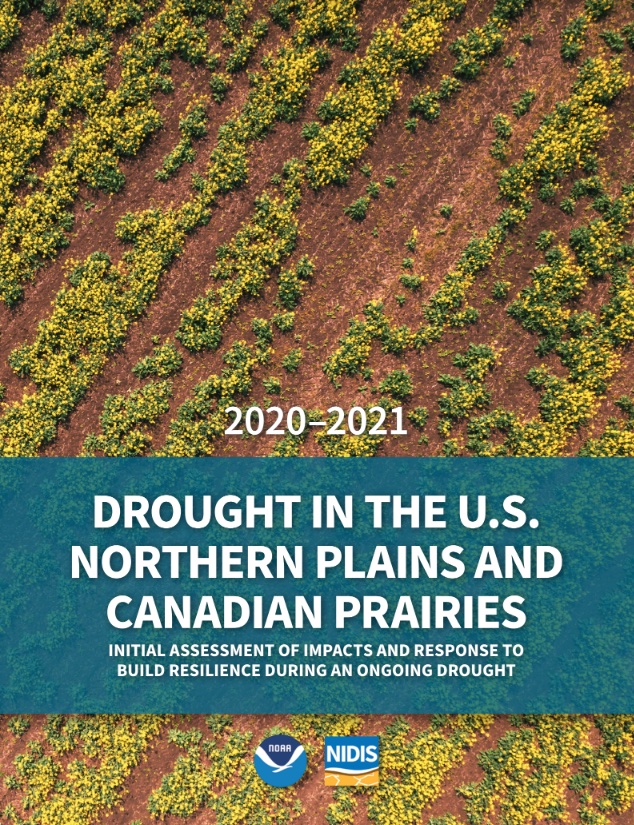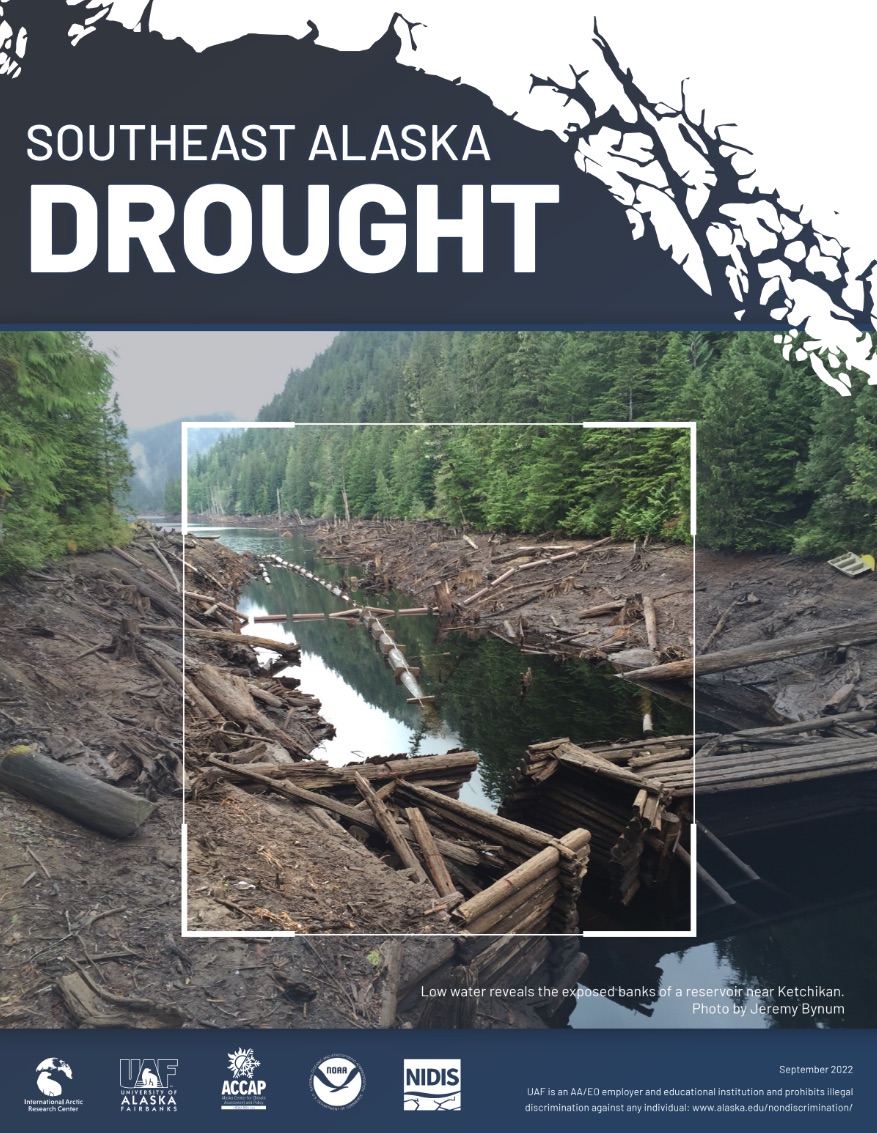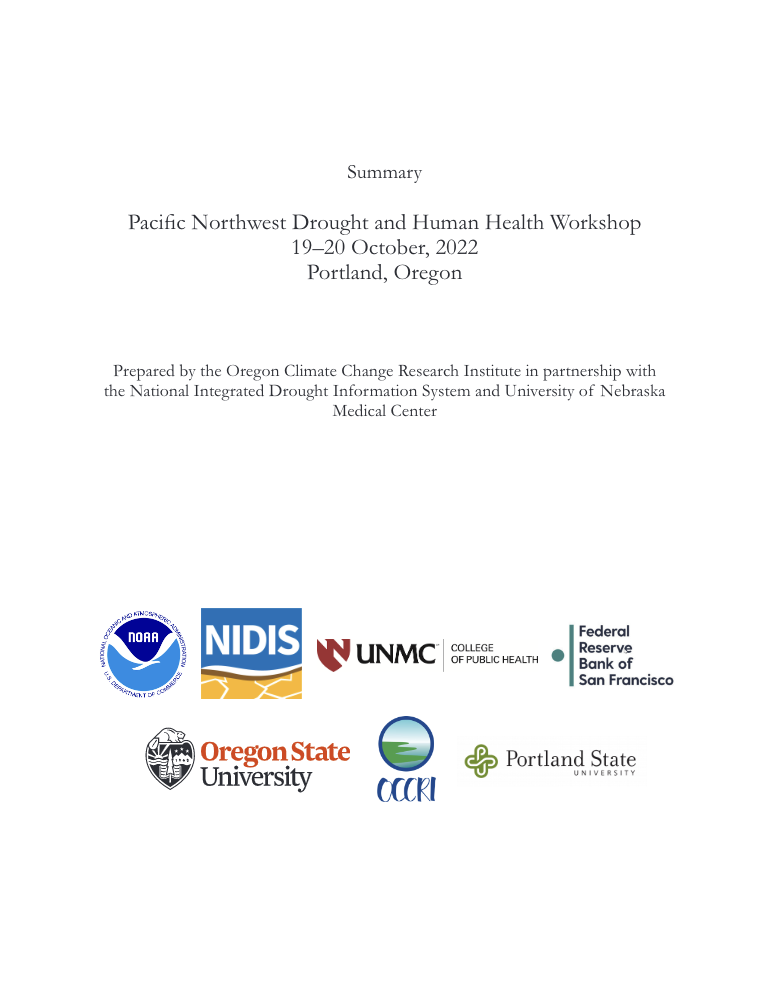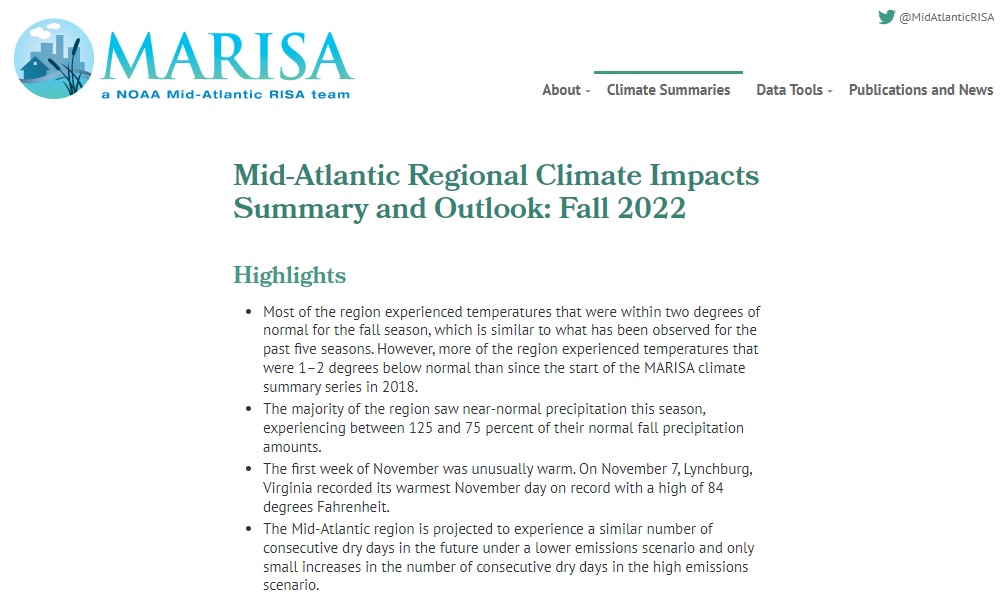For the latest forecasts and critical weather information, visit weather.gov.
Quarterly Climate Impacts and Outlook for the Pacific Region for December 2022–February 2023. Dated March 2023.
For the December–February period, precipitation was near-normal to above-normal across most of the U.S. Affiliated Pacific Islands (USAPI) and the Hawaiian Islands.
Quarterly Climate Impacts and Outlook for the Gulf of Maine Region for December 2022–February 2023. Dated March 2023.
Winter (averaged over December, January, and February) was up to 4°C (7°F) warmer than normal, with multiple sites having one of their five-warmest winters on record. Winter precipitation (accumulated from December to February) ranged from near normal to 150% of normal.
Quarterly Climate Impacts and Outlook for the Southeast Region for December 2022–February 2023. Dated March 2023.
Temperatures were much above average across the Southeast, particularly in Alabama and Virginia, as well as parts of the Carolinas and north Florida, where many locations were 4 to 6 degrees F above average for the season. Precipitation was variable across the Southeast this winter.
The purpose of the 2022 Pacific Northwest Water Year Impacts Assessment is to summarize the water year conditions and sector impacts as a resource for future management of drought and other climate extremes.
The increasing complexity and impacts of fire seasons in the United States have prompted efforts to improve early warning systems for wildland fire management. A NIDIS-funded study led by the University of California-Merced demonstrated that subseasonal forecasts of fire danger from an experimental forecast system have significant skill at up to 3-weeks lead time across the contiguous United States.
This report provides a summary of the Southeast Partners Dialogue, held on August 9–10, 2022, in Atlanta, Georgia.
The 2020–2021 drought of the greater U.S. Northern Plains and Canadian Prairies was a multi-billion-dollar event that had wide-reaching impacts on the region’s communities, ecosystems, water resources, and agricultural systems. Building off of the lessons learned from the flash drought of 2017—the last drought to affect the region—the 2020–2021 Drought in the U.S. Northern Plains and Canadian Prairies report advances understanding of drought response and preparedness actions by highlighting new efforts, along with outstanding gaps and needs.
Although southeast Alaska is one of the wettest areas in North America, it was plagued by a long-lived drought from October 2016 to December 2019. The drought intensified in late 2017 garnering significant attention in Alaska as water restrictions and reservoir levels were too low for hydropower generation to meet capacity. Over the following 18 months, the drought waxed and waned with additional impacts, especially during the hot summer of 2019.
On October 19–20, 2022, the National Integrated Drought Information System (NIDIS) and the University of Nebraska Medical Center co-led the Pacific Northwest Drought and Human Health Workshop in Portland, Oregon. The workshop was intended to identify gaps and needs, opportunities for collaboration, and ways to integrate the health sector and existing drought activities.
Quarterly Climate Impacts and Outlook for the Mid-Atlantic Region for September - November 2022. Dated December 2022.
Most of the region experienced temperatures that were within two degrees of normal for the fall season, which is similar to what has been observed for the past five seasons. The majority of the region saw near-normal precipitation this season, experiencing between 125 and 75 percent of their normal fall precipitation amounts.


